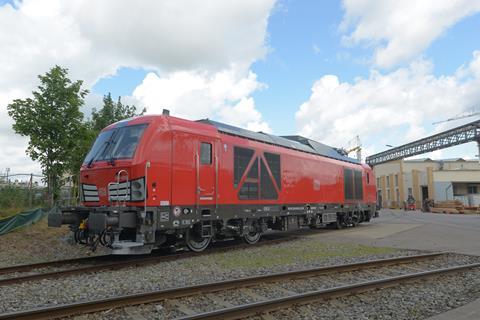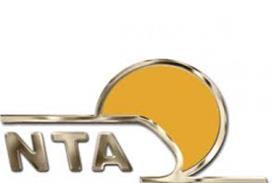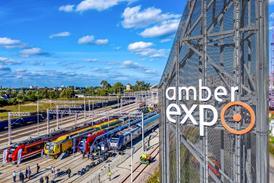GERMANY: Siemens Mobility has expanded its locomotive production hub at München-Allach. Toma Bačić reports from Bayern.

Marking the expansion and related investment programme at the site northwest of the city with a ceremony on July 7, Siemens Mobility said that €250m had been invested at its München-Allach plant to create what it viewed as one of Europe’s most modern rolling stock factories and servicing centres.

The expansion has created more than 500 new jobs, increasing the overall headcount to 2 500 employees, while the working area of the factory has more than doubled from 47 000 m2 to over 100 000 m2. Allach is the base for Siemens’ Vectron locomotive production, with more than 1 700 of four-axle locos having been built there and a total of over 2 700 ordered.
‘In Allach, Siemens is demonstrating how competitive manufacturing is possible in Germany today, with superior products, maximum automation, digitalisation and the use of artificial intelligence’, commented Siemens AG Chief Executive Roland Busch during the ceremony. ‘With the software and digital services offered to customers through our open business platform Siemens Xcelerator, we are showing the way to networked mobility of the future.’
Siemens Mobility CEO Michael Peter added that ‘the expansion of our München-Allach works into a global competence centre and home of the new company headquarters combines efficiency and innovation. By combining AI-based applications and innovative production technologies such as laser-guided installation, robotics and digital twins, we are transforming “heavy metal” into “heavy AI” and taking the rail industry in Germany to a new level.’
Home of the Vectron
Peter lauded the Vectron platform which he believed had ‘revolutionised our locomotive business’ over the 15 years since the first order for the four-axle loco design was received.

He said that the Vectron’s modular design ‘enables the combination of variants within the same locomotive, which is crucial for achieving approvals across nearly all European countries by integrating various signalling and safety systems tailored to customer needs.
‘With over 1∙2 billion km in service, our Vectron locomotives clearly prove that premium products can be successfully manufactured in Germany. We are proud to be creating more than 500 additional jobs in the “Home of Vectron” and to be consolidating central functions such as management, development, production, and service in one location.’
More locos being produced
As the design of the Vectron loco is predicated on laser welding techniques, the investment at Allach covers renewal of this equipment, while those tasks where manual welding is still needed are being eased through the deployment of laser projecting equipment. This helps to ensure that welding positions are ascertained accurately, and successful welds are carried out accordingly.
Siemens’ investment programme has also covered investment in digital tools to support the loco production process. These include CAD data image processing equipment, which uses image recognition software on a tablet screen to highlight any discrepancies in the assembly process or the installation of components. The factory is also being equipped with different robotic tools for cabling and connector assembly, which helps to make manufacturing more reliable and faster. Digital twins of the locomotives are used to support the use of these technologies throughout the factory, Siemens says.
As a result of these and other investments, the rate of completion of Vectron locos continues to accelerate. The manufacturer reports that in 2015, 90 Vectrons were manufactured at Allach each year, but now the number has increased to 385. The factory is now able to produce up to one finished loco and three locomotive cabs per day.

A high degree of standardisation was at the heart of the original Vectron concept, and Siemens says that today, no fewer than 85% of the components are shared between the various sub-types of the family approved for different countries. This level of commonality even stretches to the variants supplied for Finland’s VR, which have broad gauge bogies and a high degree of winterisation, and the electro-diesel Vectron Dual Mode locos.
Smartron niche
Among the variants of the Vectron family is the Smartron, initially conceived as a lower cost, single-system electric loco aimed primarily at independent German freight operators.
In practice, the Smartron has found favour in eastern Europe, notably in Bulgaria and Romania. While the Smartron is intended to have an even high degree of component commonality than other Vectrons, it cannot be regarded as a separate loco platform.
Indeed, Josef Ebner, Head of Operational Excellence at Siemens Mobility, told Railway Gazette International that ‘a Smartron can be manufactured in any colour the customer wants, as long as it’s Capri blue’, in reference to Henry Ford’s motto about the Model T car and to the importance of reducing customisation to drive down costs.
Investing in maintenance
While much of the focus of the celebrations surrounding the Allach expansion focused on loco production, Siemens was keen to emphasise the essential role that loco maintenance plays at the facility.
The number of loco overhauls able to be undertaken per annum at Allach has grown from 24 to 80 under the investment programme, with Siemens suggesting that its locos can manage eight years or 1∙2 million km in traffic between major works visits.
The Railigent X data and analytics suite which used across much of the Siemens Mobility rail business is also being deployed here, notably to capture performance data from locos as they are in operation. This data is then made available to staff across the manufacturing and maintenance processes, enabling faster and more targeted interventions, the company says.
Siemens continues to work on the competence centre for heavy maintenance at Allach. Once completed, expected by the end of 2026, the site will have tripled its capacity to meet the rapidly growing market for high-quality servicing and rapid response to failures. Four new servicing tracks are being built, while a new set of buildings includes specialist workshops for bogies and wheelsets.

Along with the Rail Service Centre, the services portfolio at Allach will be complemented by around 70 data and software specialists on site who will support international customers to access data and analytics via the Railigent X application suite. Siemens says that this combination of loco production, heavy maintenance and digital services in a single site gives the Allach plant a unique selling point in the market.
Looking ahead, Siemens Mobility sees Allach as the natural home for production of the Vectouro passenger coaches in the future, since these are explicitly designed to work with the Vectron loco under the ‘Vectrain’ concept. The manufacturer sees potential for up to 180 of these hauled cars to be produced each year in München, augmenting the 385 locos the factory turns out annually.

















